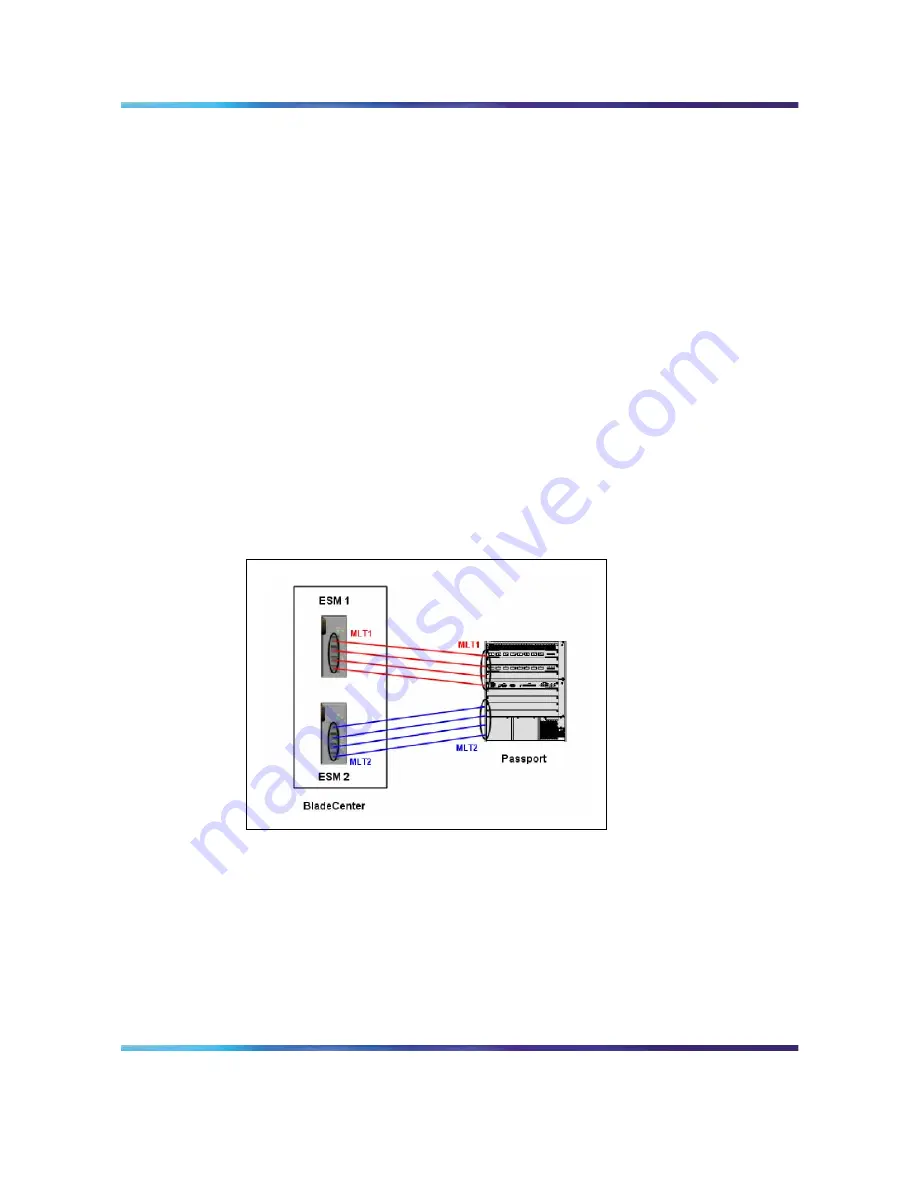
104
Network considerations
In
Figure 40 "SMLT mapping of ESMs to two Passport 8600 switches" (page
103)
, note the presence of the inter-switch trunk (IST) between the two
Passport 8600 switches. The IST sends traffic between the aggregation
switches and provides an alternate route in case an SMLT on one of the
switches fails. The IST is required for an SMLT-based topology.
Since the links for each ESM (see
Figure 40 "SMLT mapping of ESMs to
two Passport 8600 switches" (page 103)
) are spread across two separate
Passport 8600 switches, a failure on one ESM, or on one ESM link, or at
one Passport 8600 interface cannot cut external network communication to
and from the IBM eServer BladeCenter or BladeCenter T.
Multilink trunking
In an MLT network topology, the two IBM eServer BladeCenter or
BladeCenter T ESMs are mapped to a single Passport 8600 Ethernet switch
(see
Figure 41 "MLT Mapping of ESMs to a single Passport 8600 switch"
(page 104)
. The four external ports for each ESM are aggregated together;
the ESMs are then mapped to different port blades on the Passport 8600,
creating link and module level redundancy on the Passport 8600.
Figure 41
MLT Mapping of ESMs to a single Passport 8600 switch
If possible, the SMLT-based configuration described previously should be
used, since the MLT-based setup creates a single point of failure.
For ESM cabling and configuration information, see
"Ethernet switch
module" (page 61)
SIP network considerations
This section outlines how to use domains, and subdomains to avoid the cost
of backhauling to a remote Pooled Entity when one is available locally.
Nortel Media Application Server
Media Application Server Planning and Engineering
NN42020-201
01.04
Standard
4.0
27 July 2007
Copyright © 2007, Nortel Networks
.
















































